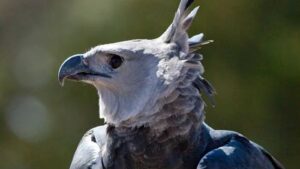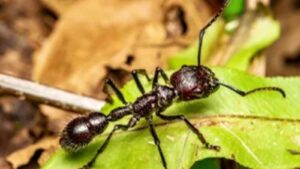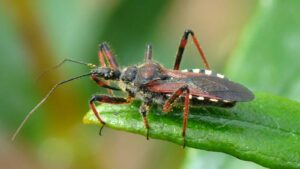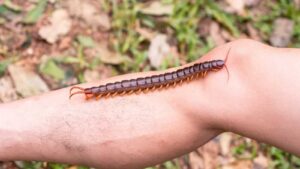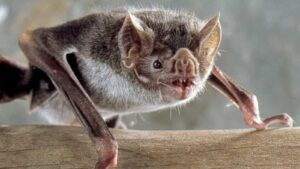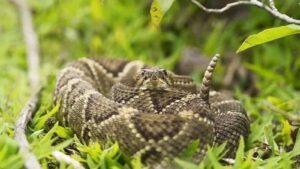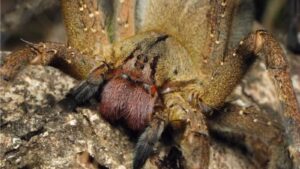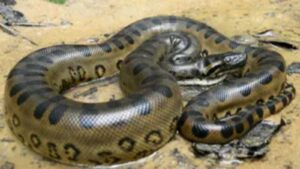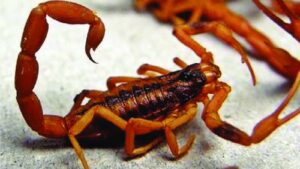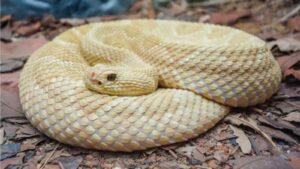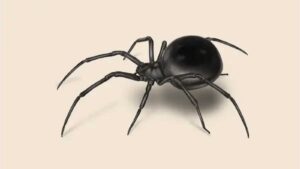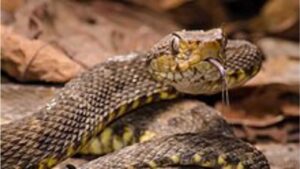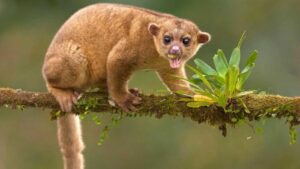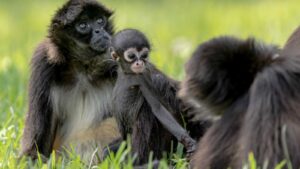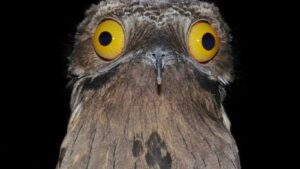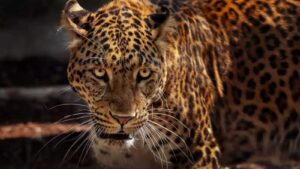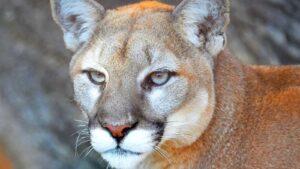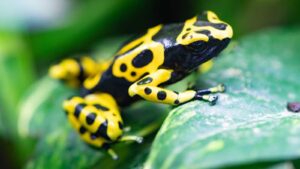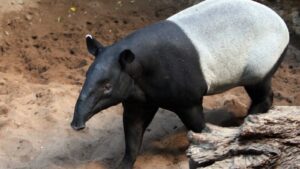Deadliest animals of the amazon
Summary
Top 20 deadliest animals of the amazon. The Amazon rainforest is undoubtedly the place of mystery, beauty, and danger. It’s also one of the harshest environments in the world. The Amazon is a vast ecosystem home to animals, both big […]
Top 20 deadliest animals of the amazon. The Amazon rainforest is undoubtedly the place of mystery, beauty, and danger. It’s also one of the harshest environments in the world. The Amazon is a vast ecosystem home to animals, both big and small, some of which have not been discovered. These animals are armed with ingenious methods to hunt, defend, and kill. Let’s look at Top 20 deadliest animals of the Amazon.
Video: Deadliest animals of the amazon
The happy eagle
This is not just an impressive sight but quite an intimidating bird. It’s one of the largest and most powerful raptors found in rainforests worldwide, with a wingspan of up to 7.5 feet and a body length of up to 40 inches. This monster, in the form of a bird with a human face, has massive talons of about 3-4 inches in diameter, which it uses to hunt large prey such as snakes, monkeys, and other larger forest animals. Unlike other raptures, this most dangerous animal of the Amazon does not fear humans, making it an easy target for hunters.
Video: Deadliest animals of the amazon
The bullet ant
Found all over the Amazon rainforest, the bullet ant derives its name from its painful sting, which is comparable to being shot by a bullet. Be warned because the pain they cause naturally dissipates after 24 hours, making them be referred to as the 24-hour ant. This deadliest creature of the Amazon is feared and respected for its sting. So if you’re planning to visit the Amazon forest soon, please watch out for this insect with the most painful bite.
The assassin bug
It’s the most absurd creature on this list, also known as the kissing bug. The assassin bug is an ambush predator that sucks prey dry and wears their corpses. This bug injects its prey with lethal saliva that liquefies the inside of it and then sucks it out. This world’s deadliest insect uses its saliva to kill prey substantially more massive than itself. A more severe effect other than its bite is that the kissing bug commonly found in central and south America transmits Chagas disease, a tropical parasitic disease whose long-term effects could lead to heart failure.
The giant centipede
The scolopendra gigantea, the giant centipedes, are among the most gigantic centipedes of the genus scolopendra. They’re found in various places of South America, especially the Amazon. They can grow up to 12 inches or more and prey on anything they can get their fangs on, such as insects, mammals, and some invertebrates. Due to its aggressive and jumpy nature, it can also prey on vertebrates, including frogs and mice. The giant centipede has a venom not only dangerous to animals but to humans as well.
The common vampire bat
Commonly found in Mexico, central and south America, they are nocturnal birds that live in colonies and completely dark places such as trees, caves, and even buildings. The vampire bird does not have a powerful bite and feeds mainly on animal blood, but what makes it one of the poisonous animals in the Amazon? This bird is a known carrier of rabies, a lifelong debilitating disease that almost always leads to death, especially if not treated.
The South American rattlesnake
Found in the savannahs and semi-arid zones of the amazon in brazil Columbia and Guyana, this pit viper species is among the deadliest amazon rainforest snakes. It grows up to 1.5 meters in length and is known for its distinctive stripes, with which it camouflages with the environment, making it hard to notice. This snake only bites when disturbed for a long time. It produces a hissing sound as a warning; its bite could lead to blindness, paralysis, or even death.
The Brazilian wandering spider
The Brazilian wandering spider is the deadliest living spider in the world. Unlike other spiders who spend their day working on the web to catch their prey patiently, this spider spends time wondering in the jungle looking for someone to bite. Commonly found in the Amazon rainforest, this extremely aggressive and deadly spider spends their day hiding and only comes out at night. The venom of this nocturnal creature can cause pain, breathing, and vision problems. Victims bitten by it should seek medical treatment; otherwise, the venom can cause death, especially in children.
The green anaconda
This world’s most giant snake can exceed 29 feet in length and measures around 550 pounds. This venomous species dwells in the Amazon and uses its size and strength to its advantage by constricting its prey, overwhelming their circulatory system in the process, and preventing blood from reaching their brain. Its prey consists of sizeable animals such as wild pigs, dears and even jaguars. Human attacks are rare with few reported cases, but green anacondas are capable of quickly harming a person, so lesson for today: don’t bother a green anaconda!
Tityus scorpions
There are more than 100 species of scorpions belonging to the genus Tityus in South America. Although only six of these are poisonous, their bites claim about 30 human lives every year alone in northern Brazil; these most dangerous animals of the Amazon frequently attack humans due to their adaptation to urban areas, thus getting in contact with people easily. They have a curved stinger in their tail, which injects a potent poison in an individual’s body, causing instant paralysis, cardiac arrest, or respiratory arrest. It is a defense mechanism and also a powerful hunting tool.
The lancehead pit viper
Also known as the golden lancehead is a venomous pit viper species endemic to a small island in Brazil. It’s well known for its light yellowish-brown color and a head shape characteristic of the genus Bothrops. One poisonous bite from the golden lancehead pit viper is enough to kill a grown man within a few hours. It’s fast-acting venom burns through flesh and causes its victim to bleed to death. Are you planning to visit the Amazon soon? Well, you may need to watch out for these poisonous creatures.
Read More: Most Dangerous Selfies Ever Taken
The black spider
The Amazon rainforest is home to various types of spiders; among them is the black spider, also known as the black widow spiders. They are a big problem in the Amazon forests, not only because of their terrifying look but also because of their aggressive behavior. This black spider lives in tropical climates and is large in size, up to 10 centimeters long. It feeds on locusts, insects, and some small vertebrates. Although aggressive, this dangerous creature of the Amazon rarely attacks humans.
12The Bothrops atrox snake
Among the most poisonous snakes in the Amazon is the atrox snake, a species that stars in a high number of lethal attacks on humans because it doesn’t only live in the forests but also near residential areas. They are giant reactive snakes of around 2 meters long with various colors such as brown, olive, and grey tones. It has loreal graves, a specialized organ it uses to identify warm-blooded animals for prey and plans a lethal attack that rarely fails.
The giant anteater
As the name implies, this variety of sloth is large and can reach over 7 feet in length. They love to chow down on bugs, including ants. They have a tubular snout and long tongue, well suited for practically gorging upon insects wherever they are. Giant anteaters prefer to stay out of the trees and stick on the rainforest floors, roaming and searching for their next insectivorous meal. Though scary, this epic wildlife is not known to attack humans.
Kinkajou
Endemic to the tropical rainforests of central and south America, the kinkajou are small animals classified as carnivores because they have canine teeth; however, most of their diet is fruit and nectar, and on rare occasions, they eat eggs, insects, hatchlings, and small vertebrates. Kinkajous spend most of their time on trees. These rainforest wildlife animals may be cute, but they don’t make good pets; they are known to scratch, bite, and injure their owners.
Spider monkeys
Found in the tropical forests of central and south America, from southern Mexico to Brazil, the spider monkeys are named so because of the way they hang on trees holding different branches with their limbs and long tails shaped like spiders. They have no thumbs but have four curved fingers. These guys live in groups of around 35 and are wary of humans because of hunting and will break tree branches to hurl them at people. This Amazon rainforest creature should be watched out for when visiting the Amazon forest.
The Potoo Potoos
The Potoo Potoos are fascinating creatures, both in appearance and behavior; however, they are dangerous to insects. They are nocturnal birds that hunt at night and sleep during the day. The potoo’s color makes it extremely hard to spot them in the wild since they camouflage tree barks so well. This evolution allows them to rest comfortably and save their energy for hunting. They have large eyes, enabling them to see and attack insects in the dark, and insanely wide mouths that they open, flying through the air in an effort to catch moths and other bugs.
The Jaguar
As Central and South America’s largest big cut, it’s no wonder jaguars are considered dangerous. With one of the most impressive bite strengths among all the big cats, the jaguar can easily pierce through human bones or crush a sea turtle shell. Measuring between 43-75 inches long and up to 250 pounds in weight, Jaguars prefer large prey like reptiles and livestock. Attacks on humans are rare but often fatal, but it seems we’re more of a threat to them than they are to us, as evidenced by their fragmented population due to deforestation.
The puma
The puma is one of the dangerous creatures of Amazon. It’s active mostly at dusk, night, and dawn. Throughout its range, its prey is hoofed mammals, ‘ungulates’ especially the dear larger than itself. In North America, each puma kills about 48 ungulates per year, and a more significant number of smaller prey like rabbits and hares and domestic livestock, primarily sheep and goats, are also taken. It is comparable in size to the jaguar, and it moves about 6 miles per night when hunting.
The dart frog
The vibrant-colored poison dart frogs comprise many species native to central and south America. Many spend their time on the Amazon forest floors, while others live on trees. The largest measures just about 2.4 inches long. Humans may think they are pretty, but naturally, poison dart frogs are very poisonous, and you need to stay away! The most poisonous species, which is the golden poison dart frog, has enough poison to kill ten adult humans.
Read More: Top 100 Building Height Comparison
The tapir
This is among the scariest animals in the world; they are big, strong, herbivorous rhino-like animals with dangerous teeth and a renowned unpredictability, which makes them especially dangerous. Tapirs inhabit the jungle and forest regions of central and south America and Southeast Asia. They have a prehensile trunk, which they use to grab things like elephants do. These mammals have a tough side; they can fiercely defend themselves and their young ones, sometimes maiming or even killing people.
Which of these animals is the deadliest? Who do you want to travel with in Amazon? Share your thoughts in the comment section.
